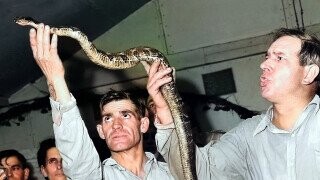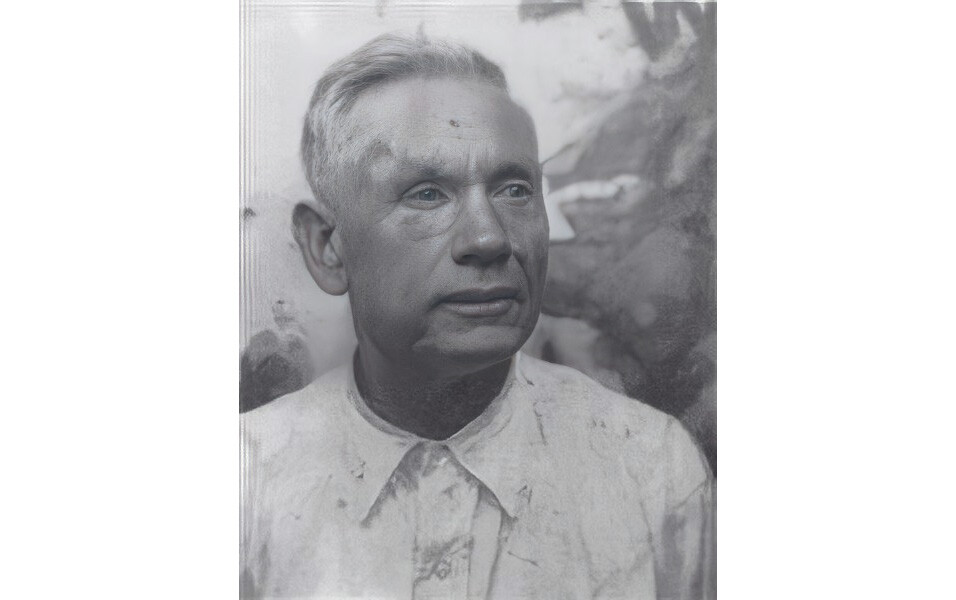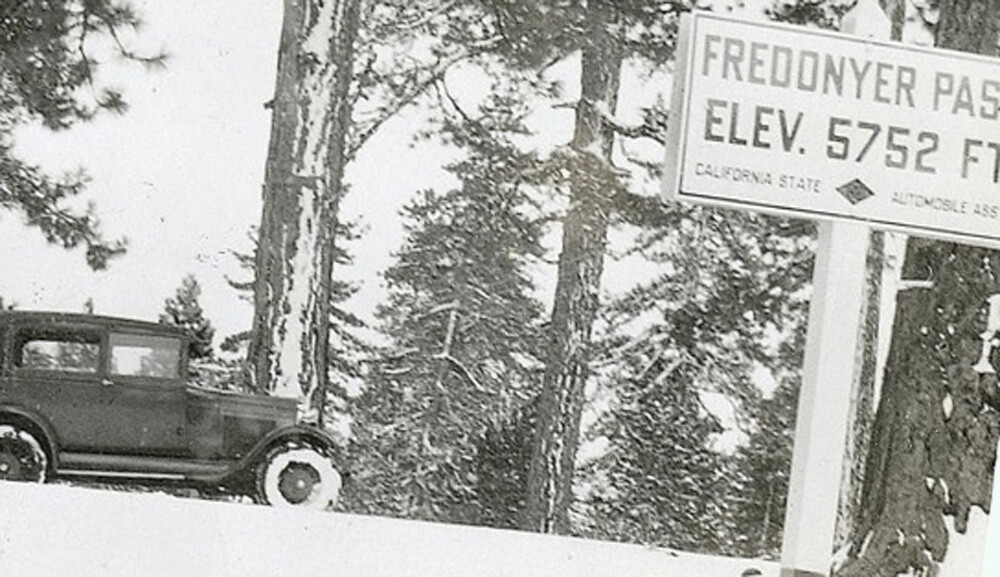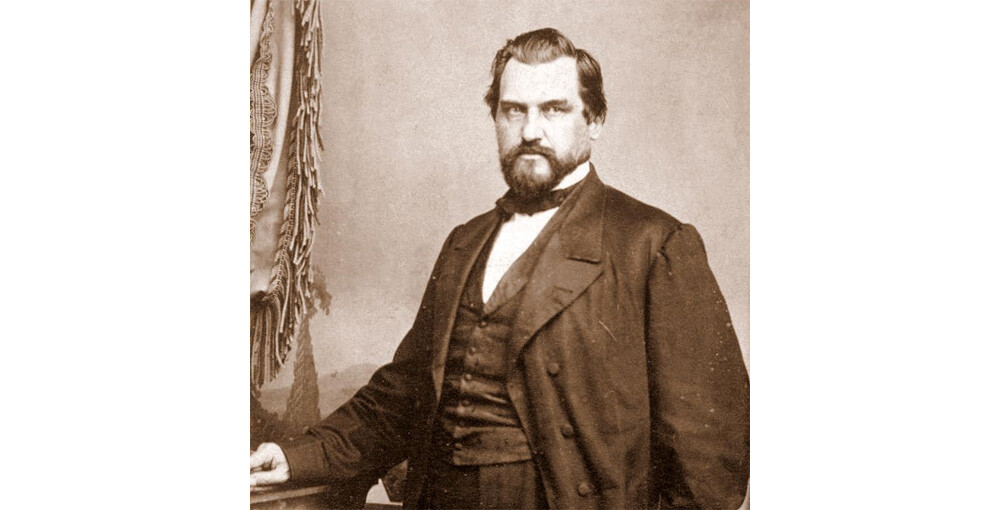5 Bizarre Deaths That Stand As Cautionary Tales

If you want to go on living, you need just follow one simple rule: Don't die. And yet despite having this instruction at their disposal, dozens of people still end up dying every single year. Clearly, you all need more specific advice, which is why we compiled the following deaths that could have easily been avoided. Sure, all these people would still have died eventually, but they needn't have died like this.
The Preacher Who Took Too Literally The Part In The Bible About Snakes
"Go into all the world and preach the gospel to all creation," said Jesus, right before ascending into heaven. "And these signs will accompany those who believe ... they will pick up snakes with their hands; and when they drink deadly poison, it will not hurt them at all."
Well, maybe Jesus said that. Some people doubt it. And we don't just mean "people doubt Jesus even existed," we mean Biblical scholars—who take it as obvious that Jesus existed, performed miracles, and resurrected—question this line, because most gospels don't mention it, this verse was added after the rest, and the language is so different from everything before it.
Don't Miss
So you probably needn't pick up snakes to prove you believe. There was actually a conversation in the Bible where someone suggests you should endanger yourself just because the scriptures say God will protect you; the person who suggests that is Satan, and Jesus replies no, don't put God to the test. Also, maybe the line about snakes was just metaphorical. But still, in 20th-century America, a bunch of churches popped up around the idea of faith-based snake handling.

A couple different preachers died this way, bitten by a venomous snake during a church service. We'd like to focus on George Went Hensley, because this guy was pretty weird even before a diamondback rattlesnake sank its fangs into his wrist. Hensley started a snake handling ministry around 1910. Then, during Prohibition, he quit the church and switched to brewing moonshine. A judge sentenced him to four months, and while on work detail, he fled his chain gang.
So when he returned to his reptilian vocation, he was a convicted bootlegger and a wanted fugitive. During one service in Virginia, a boy killed the snake instead of letting everyone frolic with it. That boy is the smartest person in this story. In Florida, a snake killed one congregant; Hensley officiated at the funeral then quickly fled to avoid arrest.
In 1945, Hensley was still snake handling, his snakes killed another parishioner, and the preacher really was arrested this time, but he skipped on paying the fine. Finally, one snake bit Hensley himself. He refused medical treatment, believing his faith would save him. Because of this refusal, a judge officially declared the death a suicide.

Hensley left behind thirteen children and ten stepchildren by four wives, one of whom (one wife, not one child) had agreed to marry him to lift a magic curse. It's hardly surprising that serpents were his eventual undoing. Handling a venomous snake during a service is very risky of course. It's like a preacher pointing a loaded gun at his own head.
The Preacher Who Pointed A Loaded Gun At His Own Head
This particular preacher did not shoot himself in the head believing faith would render him bulletproof. The gun was just a visual aid, one he look a little too far.
The man was Florida youth pastor Melvyn Nurse, and the year was 1998. When you sin, he told his congregation of 250, you're playing Russian roulette, courting great danger. And to illustrate this, he inserted a round into a revolver, spun the cylinder, lifted the gun to his head, and fired.

Paul_Henri/Pixabay
"So wait," you might think, "the guy was counting on the five out of six chance that the chamber would be empty when he pulled the trigger?" No, no. See, Melvyn loaded the gun with a blank (and possibly with additional blanks beforehand). So when the gun fired, it would wow the church with a loud noise, but he would be perfectly safe!
Only, no, that's not how blanks work. Yeah, a blank doesn't have a hunk of lead and gunpowder, but even if it's just a roll of cardboard, it's still hitting you with lots of force if you hold the gun right up to yourself. Heck, guns that fire nothing but air can kill you if they fire with enough force right at your head. The blank knocked pieces of Melvyn's skull into his brain, and the 35-year-old died five days later in the hospital.

Melvyn, despite technically being a Florida man, was otherwise not what you'd call a gun nut. He'd urged teens to stay away from guns and told parents to keep guns away from their kids. The demonstration in fact aimed to (among other things) warn kids about the dangers of guns, and in this, it succeeded more than the man had anticipated. One teen following the sermon turned over his own gun to his parents.
We could say that the lesson here is that blanks are dangerous. But since you might go your whole life without loading a gun with blanks to play Russian roulette, we'll instead default to rule number one of owning a gun: Never point your gun at anyone unless you are willing to kill them. That even goes for unloaded guns (you must operate under the assumption that even an unloaded gun might in fact be loaded). "Threaten" someone with a gun only if you are willing to kill them, and do not point a gun jokingly at someone at all. The only reason to point a gun at someone if you aren't willing to kill them is if you're an actor doing a scene, and surely no one would ever use a real gun for that, no way.
And while we're talking about Russian-themed deaths ...
Russian Generals Loaded Their Plane Up With Shopping; It Crashed And All Died
In the USSR, everyone was equal, but some people were more equal than others. Consumer goods, even very basic ones, were scarce and kept in special stores that denied entry to most citizens, even if they somehow got the money to afford those wares.

In 1981, a bunch of military folk went to Leningrad and received a treat: a chance to go on a shopping spree in these special stores. On February 7, with their trip done, they piled into a plane, a passenger jet that contained 50 people total. The plane left the runway at an odd angle and crashed seconds after takeoff. Every single person aboard died. The only living things that escaped the crash were a huge number of oranges from a cargo crate, because this disaster was directed by Francis Ford Coppola.
In this one incident, the USSR lost 16 admirals and generals, plus another dozen or so other high-ranking officials. For comparison, a total of three admirals or generals died during the entirety of World War II. This crash had wiped out the leadership of the entire Soviet Pacific Fleet. Clearly this had been some kind of coordinated attack. America did it, the USSR declared at the time—though, privately, they investigated if maybe someone a few rungs lower in the military had orchestrated a mass assassination to score a promotion.
The plane actually crashed not because of any malicious action but because of improperly secured goods. The military brass had overloaded the plane with their shopping. Don't picture a bunch of duty free watches and perfume bottles but instead full-size furniture, as well as giant crates of stuff, like those oranges. Worst, one lieutenant had bought massive rolls of paper weighing a total of a ton for the military newspaper, shoving those into the plane with the rest.

The pilots objected to the excess cargo, but the officers (who were likely drunk, based on how most of these trips went) overruled their concerns. They also fired several pilots, something it's not clear they had the authority to do, which was enough to force obedience from all who remained. Doing the math, it was possible to fly the plane with all that extra cargo. It was also possible the cargo would shift and bring the plane down, which is what happened.
It all sounds like some fable about a greedy king who piles a bunch of gold into a sack then drowns. Really though, you can't lay the blame for this on greed alone. In a sane world, if someone is so greedy that they seek such luxuries as "chairs" and "fruit," they shouldn't have to buy them during a once-in-a-lifetime trip and check them in as luggage. They should be able to just order the stuff, and pay extra if needed for shipping it using some method that kills no one.
A Hillbilly Murdered A Reporter, Because Reporters Kept Portraying His People As Hillbillies
Nowadays, there's this trend of reporters traveling to rural areas to find out what those there think. Many people mock this trend, since the reporters rarely venture very far from the beaten path (either in geography or philosophy), and the whole thing comes off very superficial. Half a century ago, however, reporters had their own trend of rural reporting. The destination was Appalachia, and the goal was documenting previously unreported poverty.
By "poverty," we're not talking about people having trouble paying their bills. We're talking people in homes with no electricity, no running water, no toilets, scavenging coal by hand to burn for warmth. Readers elsewhere in America had been previously unaware anyone in the country lived this way. And those in Appalachia themselves, on getting their story told, were ... not entirely appreciative of the attention. The coverage insulted them, said some residents, even if it was true. Or, it wasn't true—if it was true for some people, it wasn't true for everyone, so don't go portraying all of us like those Appalachians.

Canadian reporter Hugh O'Connor went to Jeremiah, Kentucky, in September 1967 to film a documentary titled US. He interviewed some miners living in a rented shack, till the segment was interrupted by the arrival of the property owner, Hobart Ison. Ison pointed a .38 revolver at O'Connor and the crew, telling them to clear off. They prepared to do so, but they figured step one was to pack up all their equipment.
Now, let's give you our second gun tip of the day, this one for when you're not the person holding the weapon. When a homeowner points a gun at you and says to leave, leave immediately. You might be tempted to ask "Should he be pointing a gun at me?" or "If I take my time leaving, should he really shoot me, since I'm clearly on my way out?" or "Hold on, this isn't someone defending their home at all, since I'm not a threat, and this guy Ison doesn’t even live here." But if you ask yourself those questions now, the rest of us will probably be asking those same questions at the homeowner's trial for your murder.
Ison did kill O'Connor, and his trial actually did not delve hard into any of those questions. Instead, the trial mainly tried to determine how much Kentucky footage would have made it into O'Connor's documentary, and whether he was going to include any rich parts of Kentucky as well. Because if the trial concluded that O'Connor was making another of those documentaries about Kentucky being poor, well, the jury would side with Ison and acquit.

–actual tagline for a documentary on this case
In the end, this jury failed to reach a verdict. Before a second trial, Ison pleaded guilty to manslaughter and accepted a ten-year sentence ... of which he served a single year before being paroled.
This story has a second murder as its epilogue. After Ison went to prison, the sheriff gave that .38 revolver to the man's nephew, "Moose" Breeding. For 30 years, Moose left the gun in a bank's safe deposit box. Then in 1999, he learned of a new documentary about O'Connor's death, so he took the gun out in hopes of selling it to the filmmaker, Elizabeth Barret.
Elizabeth Barret was not interested in owning this gun that had killed her predecessor. So Moose left it around his house. Then in 2003, his housekeeper found it, took it to the sawmill, and shot a teenager there. The motive: She wanted to punish the kid's father, who she said had tried burning down her house on the old Ison property.
Maybe that guy did set fire to her house. But the victim wasn't his son. She'd made a mistake and shot the wrong innocent teen.
Many People Hurt Themselves Doing Stuff To Their Butts, But This Guy Really Deserved It
Drive through the Sierra Nevada in California, and you may come upon one unremarkable bit called Fredonyer Pass. In 1995, California police pushed to rename this pass for Larry Griffith, a deputy killed in the line of duty. Traditionalists objected, saying the name change would disrespect the memory of Fredonyer, the man the pass currently honored. Who was Fredonyer? No one knew a lot about that, but it still seemed important that his name live on.

via tipurdy.org
Atlas Fredonyer was a Swiss man, who referred to himself as a doctor, though it's unclear if he really was one. He stumbled on the pass in 1850. With new interest in Fredonyer thanks to the proposed name change, historians now looked into him and discovered that, besides stumbling on land (which he then claimed for himself, becoming rich), he was best known for being convicted of incest.
The victim of this crime was Sally, his 15-year-old stepdaughter, and the only reason it came to light was that when she fled his home, Fredonyer was so confident in his position in the community that he contacted the police to have them search the building where she took refuge. When they found her, Sally's claims against the man were credible enough that the police then ignored his position and arrested him.
Fredonyer represented himself at his 1862 trial, speaking for four days at suspicious length. It appears he was talking so long to distract the authorities and keep them from returning him to his cell. His cell mate, a horse thief, was using that time to dig a tunnel and escape, and when other prisoners reported smelling the displaced dirt, and the court learned that police had narrowly caught the escapee, Fredonyer immediately wrapped up his argument.
The court found him guilty. However, Atlas Fredonyer's confidence in his own position was correct after all, because the governor soon pardoned him, saying, c'mon y'all, it's Atlas we're talking about here!

Upon release, Fredonyer fled the region and never returned. He only made the news again thanks to the way his life ended. In 1880, he went to a San Francisco hospital, revealing that he had inserted a 16-ouce bottle into his butt and now could not remove it. He'd inserted it to cure a bad case of diarrhea, he claimed. The doctors had a duty to treat his injury regardless of whether he was being truthful about how it had occurred.
They tried to extract the bottle through the anus whence it came, and when that failed, they prepped the 250-pound man for surgery. Fredonyer appeared happy following the operation, then he suddenly felt a ripping sensation in his abdomen and died.
So the lesson here is please don't do undesirable things to your butt (and also please don't do undesirable things to your stepdaughter's butt). Not that any of that will cost you your place in history. Despite the council easily passing a measure to rename Fredonyer Pass (honoring Fredonyer was "improper, unacceptable, and undeserving to the residents of Lassen County"), the name change ultimately failed. That crack in the mountain is still known as Fredonyer Pass today. Try not to get stuck there.
Follow Ryan Menezes on Twitter for more stuff no one should see.
